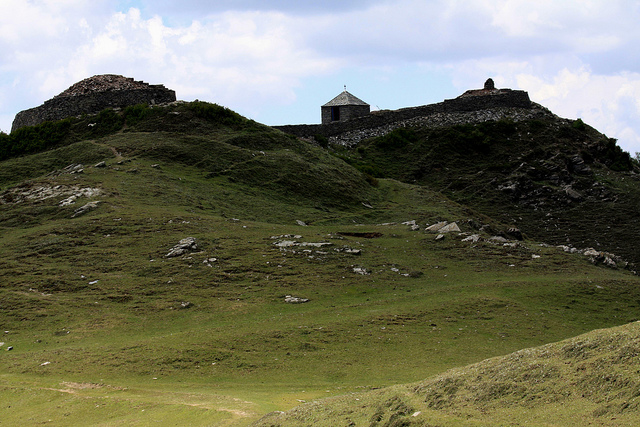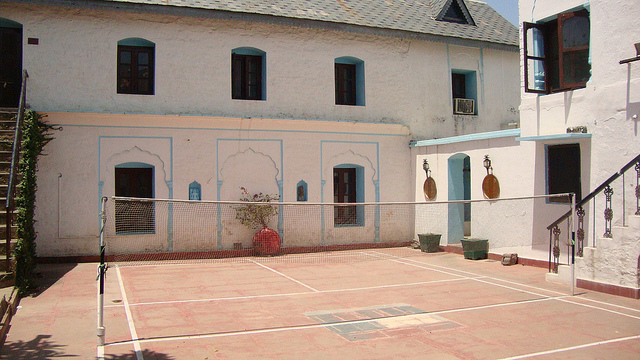Gurkha Castles
Most of the Gurkha castles are in ruins but yet there is something charming about them. Retaining their old-world charm, Some of the castles have stood the test of time.
Most of the Gurkha castles are in ruins but yet there is something charming about them. Retaining their old-world charm, Some of the castles have stood the test of time.
Within a short driving distance of both Arki and Subathu - and barely an hour away from the Jubbarhatti (Shimla) airport - is the fort of Kuthar. Its oldest sections are 800 years old while the most recent structures are barely eight decades old. This is spread over a large area and fresh-water springs flow within its confines. Close-by are several scenic attractions like Kunihar, the Gurkha fort of Subathu and the hill station of Kasauli.
The Jaitak hills near Nahan and Sirmour present a royal Jaitak Fort perched atop its plain. The fort is believed to have been constructed out of the material which was recovered from the destroyed and devastated Nahan Fort in 1810. The Gorkhs leader Ranjor Singh Thapa and his brave men hade attacked and ransacked Nahan fort and Palace and constructed this majestic Jaitak fort atop the Jaitak hill.
This picturesque fort, located at approximately 3,540 meters, was built by the Kulu king. The fort is surrounded by wide trenches with a small pond inside. The walls of the fort are marked by bullet holes from sieges. There is a good camping ground here.

The 200 year old Raja Bhushar Palace and Temple Complex is a beautiful building made of timber and cedar beams and layers of ruble masonry. It is one of the best examples of hill architecture in the region.
The palace was built by the Rampur rulers of Bushair who once ruled Kinnaur.
Completed in 1918, this is a splendid country manor designed in Indo-European tradition. The visionary behind this bold structure was Justice Sir Jai Lal. It stands in 12 acres of greens, and is just a short walk from the village core and the Taal. It is now run by the owning family as a heritage hotel.
This is a unique building. Over a hundred years old, it was built by Lala Buta Mal, a scion of the Chaujjar Sood clan. It includes six identical apartments built for his six sons. These lie around a sunken courtyard. In warmer weather, this courtyard is flooded with water to provide cooling. The water for this has been brought by the Butails from the nearby Nalsuyah Khad.
At this place there is a confluence of river Yamuna and Tong ( Tamsa ). This is a beautiful place and a paradise for tourists. Nearby is village Kalsi ( now in Uttar Pradesh ) 25 km. from Paonta, which was the old capital of Sirmaur. At this place there is 'Ashokan Rock Edict' which is worth a visit. The Ashoka pillar which stood here was removed to Delhi by one of the Muslim Rulers of the Sultanat period.
Nalagarh Fort is situated on a hillock at the foothills of the Himalayas. Built in 1421 by Raja Bikram Chand of the Chandel Rajput rulers, Nalagarh fort stands 5 storey’s tall and is surrounded by lush greenery. The bastion and some other structures within the fort are built in the Mughal style of architecture. The fort palace has now been converted into a heritage hotel.
Nalagarh Fort is considered to be one of the major tourist attractions in Nalagarh. It is assumed that Nalagarh Fort is the first one out of the three forts built by the kings of Jaipur. Nalagarh Fort has placed itself on a hillock at the foothills of the mighty Himalayas.

Located 21km from Nalagarh, Ramgarh Fort was built by Raja Ram Chander of the Chander Rajput rulers. The fort is situated at a height of 4000 ft and allows a spectacular view of the plains and towns of Punjaba dn the snow clad peaks of the Himalayas. The fort is now a heritage hotel.
Fort Ramgarh is a heritage hotel with a history that dates back 350 years. It was built by the same person who built Khajuraho temples - Kushal Singh, a descendant of the Chandel Rajput rulers.